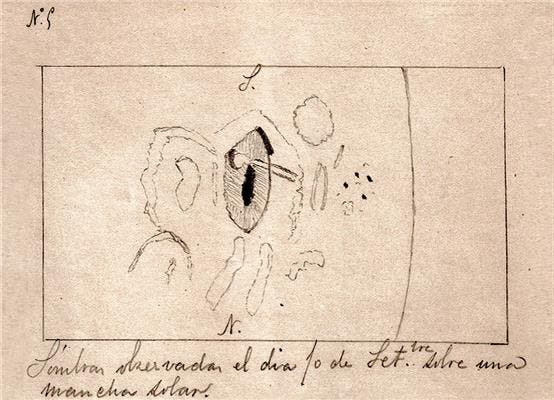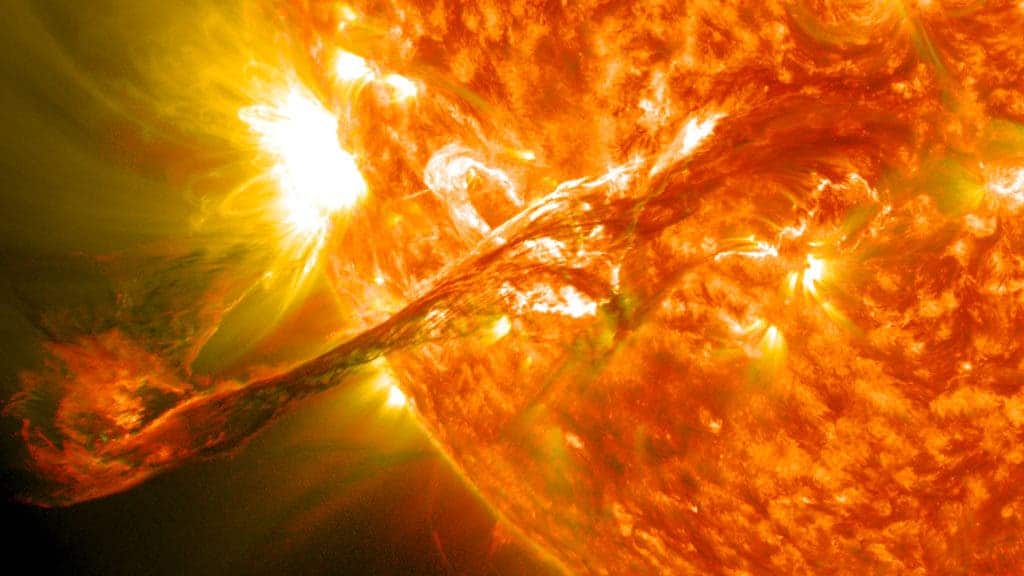This is how a Spanish teenager became one of the first people to ever describe the rare phenomenon.

“A huge, beautiful sunspot was formed from yesterday to today. It is elongated due to its proximity to the limb … by looking at it carefully I noticed an extraordinary phenomenon on her, on the penumbra to the west of the nucleus, and almost in contact with it, a very bright object was distinguishable producing a shadow clearly visible on the sunspot penumbra. This object had an almost circular shape, and a light beam came out from its eastern part that crossed the sunspot to the south of the nucleus, producing a shadow on the penumbra that was lost in the large mass of faculae surrounding the eastern extreme of the sunspot”.
With these words, Juan Valderrama y Aguilar, a 17-year-old amateur astronomer, described what he witnessed with his small telescope, with an aperture of just 6.6 cm and equipped with a neutral density filter to dim the solar light. He wrote down what he witnessed and even made a drawing (see above) of the flare. He then submitted his observations to the French journal L’Astronomie, which published it.

“The case of Valderrama is very unique, as he was the only person in the world more than a century ago to observe a relatively rare phenomenon: a white-light solar flare. And until now no one had realised”, explains José Manuel Vaquero, a lecturer at the University of Extremadura and co-author of an article about the event, now being published in the journal Solar Physics, to Sinc.
White-light solar flashes are caused by the sun’s acceleration of electrons to speeds greater than half the speed of light. They’re sudden flashes of increased Sun’s brightness, usually observed near its surface. Such solar flares are difficult to study without complex equipment, which is why they were rarely seen until recent years.
Before Valderrama, only two instances have ever been reported. The first was by British astronomer Richard C. Carrington in 1859, and the second by the Italian Pietro Angelo Secchi in 1872. Both reports caused quite a stir in their day, as scientists were wondering if the phenomenon would affect the Earth. Valderrama’s case received much less exposure, and the man himself was not as famous as his counterparts. Vaquero will now publish Valderrama’s first biography.
Journal Reference: J.M. Vaquero, M. Vázquez, J. Sánchez Almeida. “Evidence of a White-Light Flare on 10 September 1886”. Solar Physics 292: 33, 2017. DOI 10.1007/sll207-017-1059-6.


